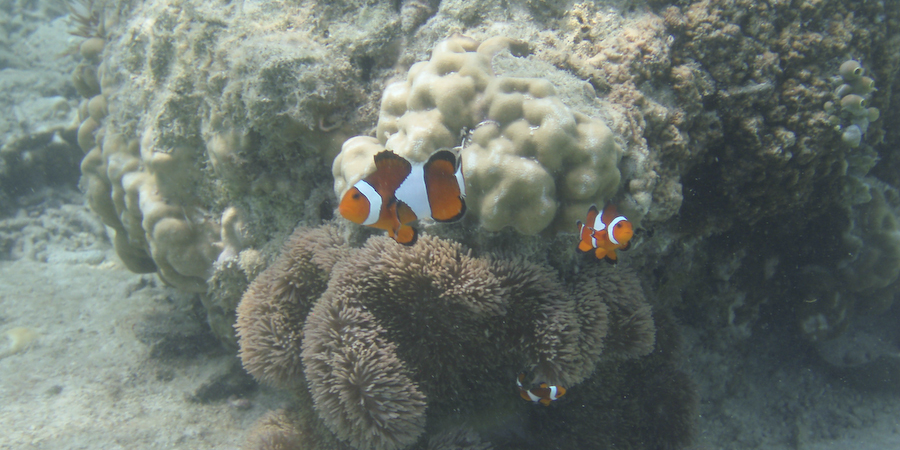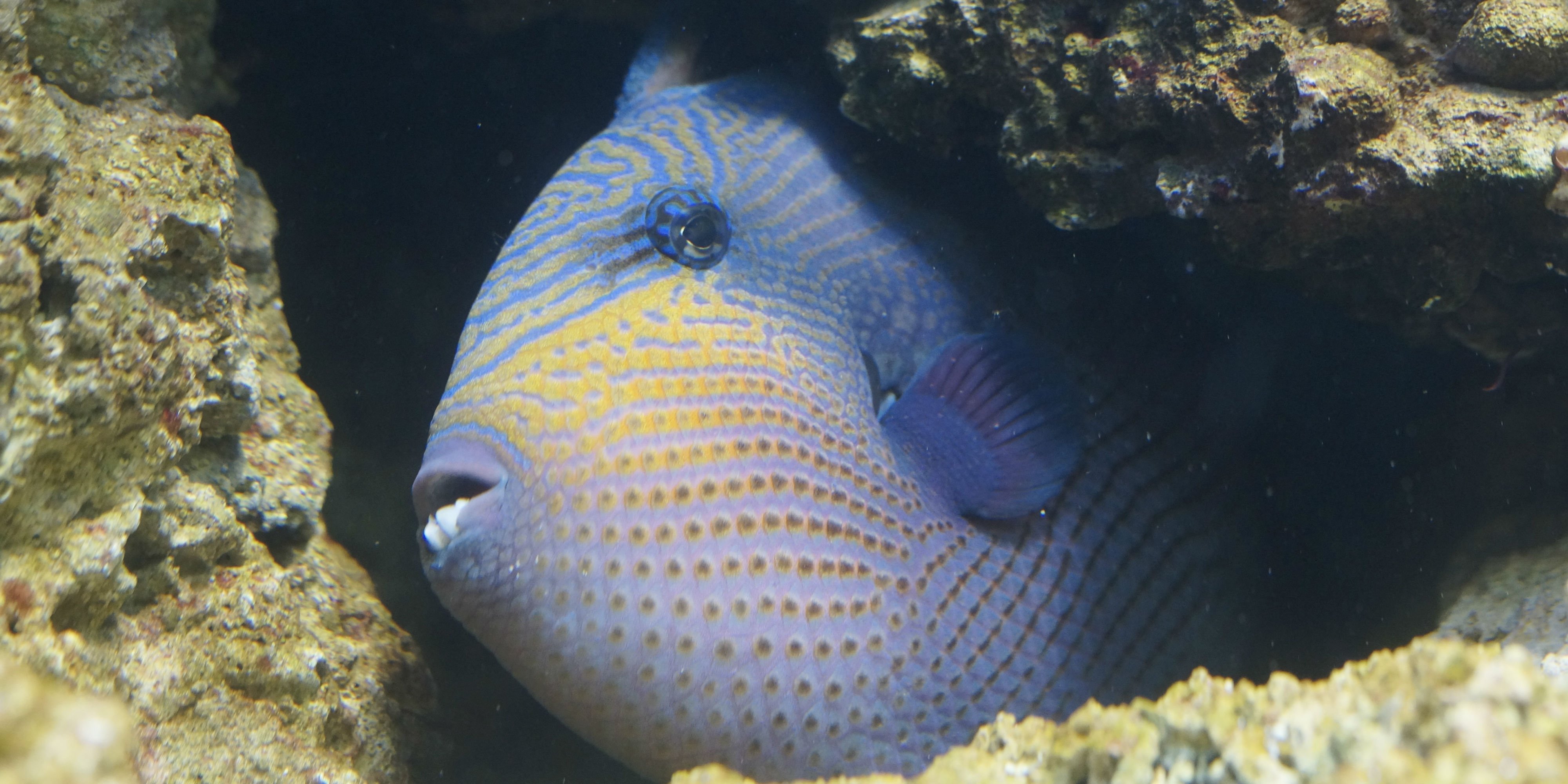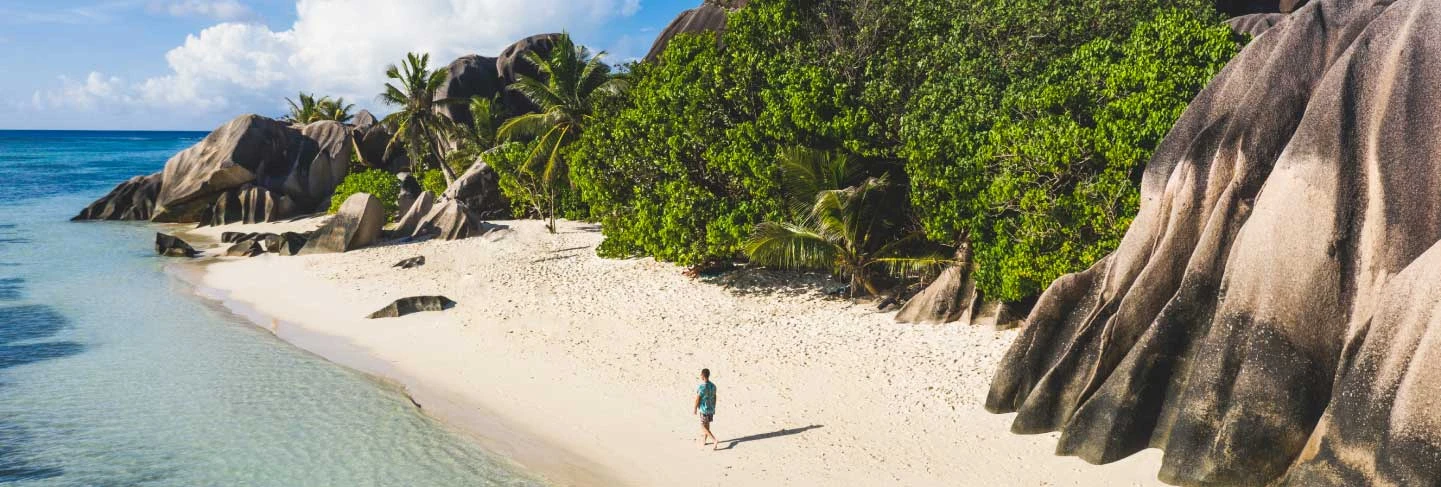
Why sustainable tourism is essential for great scuba diving
Mark Easterbrook
Posted: September 24, 2019
Original photo: “Boats on the beach, on the sea” by Maxime Guilbot is licenced under CC BY 2.0
Malaysia’s Perhentian Islands contain a treasure chest of natural resources. Tourism has injected wealth in to the community. However, this marine ecosystem is fragile, so sustainable tourism is needed.
The lady at the chicken rice stall next to the “Anti-Gravity Dive Shop” says she goes diving when she needs to relax. You might do a double take, before you remember that divers come from all walks of life.
Business from the beach-side stall is clearly booming, with neatly wrapped chicken rice meals bouncing off the cart and into the mouths of hungry divers on their surface interval.

Original photo: “Back from the dive” by Maxime Guilbot is licenced under CC BY 2.0
Sustainable tourism in the islands
She is advanced enough in years to have seen the Perhentian Islands transition from a fishing community into a world-class tourism area. She would have seen the transition from subsistence fishing, through the gazettement of a national park, to the entry of her community into the monetary economy.
In the past, her family would have obtained their sustenance from the sea. It still comes from the sea today, but via a transfer of money from tourists to dive shops, food vendors, hotels and those entrepreneurs selling everything from shampoo to flip-flops.

Original photo: “Perhentian Island Beach Bar” by Ed Johnson is licenced under CC BY 2.0
The Perhentian Islands are a destination we should all see at least once. But there is a conundrum. Unless tourism is regulated, these islands will be permanently damaged. Sustainable tourism looks to encourage people to engage with the ecosystem and to protect it for the future.
Why go to the Malaysian Perhentian Islands
Tourists are drawn to the clear water, corals and friendly fish, protected by the Perhentian Marine Park. It has much to offer, from the adventurous to the leisurely.

Original photo: “Exploring the Perhentian islands” by G E M is licenced under CC BY 2.0
Luxurious hotels with panoramic vistas provide honeymooning couples with no reason to leave the hotel. Tents on the beach are ready for those who only need to lie down when sleeping.
Those with interests in between these ends of the luxury spectrum are catered for. Just don’t expect fast cars and motorbikes – there are no roads on the islands. For the petrol heads, the skills of the boatmen ferrying people between islands and beaches will provide this adrenaline rush.
But the most compelling reason to visit the Perhentians is what lies beneath the water’s surface. Adventure awaits between the surface and a 30 metre depth for those with the required diving certifications.
What you can expect on scuba diving adventures

Original photo: “Ready to go down!” by Maxime Guilbot is licenced under CC BY 2.0
“Right hand on mask and regulator, left hand on the back of your head!” bellows the divemaster.
Once all surface safety checks have been completed, you’ll roll back and enter the water. You’re enveloped in bubbles, and the adventure is well on its way. After completing the buddy checks, the divemaster signals for the descent.

We are at Tokong Laut, Malay for “Temple of the Sea”. What starts as a rocky outcrop protruding two metres above the surface is revealed as a pyramid rising up from the seafloor below.
You descend, slowly, to equalise every breath to reduce ear discomfort. This procedure continues until you reach a bottom depth of 25 metres. At this depth, Gorgonian corals wave their welcome as we pass, travelling in the same current as their nutritious food.
Through eons, erosion has committed fallen boulders to the foundations of an underwater habitat that only the adventurous few get to see with their own eyes. The false clown anemonefish, made famous by the film “Finding Nemo”, dart around the safety of the anemone tentacles, antagonising divers as they swim past.

Original photo: “P7160160” by Christian Holmér is licenced under CC BY 2.0
You may stumble into triggerfish territory. Sometimes a fish stares the divers down, showing its teeth – reminiscent of a 5 year old’s milk teeth.
You should watch it carefully and be thankful that its top fin does not extend. This is a sign of preparation for attack. Leave its territory and watch from a distance as it antagonises the other creatures that stray into its zone.

Your dive watch registers 31 degrees celsius. Some of the corals have turned white – bleaching has started. You’re at the top of the habitable temperature for the mutualistic relationship between the coral polyps and its zooxanthellae algae neighbour. Much of the coral’s energy is taken from the byproduct of the algae’s photosynthesis.
The naturalists within the dive team warn that the Perhentian Islands are showing signs of entering another coral bleaching period, where algae no longer take residence in the coral structure.

Original photo: “Perhentian islands/ Deserted Island/ Paradise” by G E M is licenced under CC BY 2.0
The link between tourism and coral reef conservation
The underwater world of coral reefs is mesmerising, addictive and relatively easy to access. Tourist numbers to the island are just below two million people per year and rapidly growing. New accommodation is being built to accommodate the demand, with more land being eroded in the process.
And so more nutrients and silt are washed into the ocean. With more nutrients, comes other algal species. These suffocate the corals and their zooxanthellae algae.
Runoff blankets the corals. Added silt reduces natural light. Unable to complete photosynthesis, the corals slowly starve.
This results in coral bleaching events.
A coral reef has four weeks to recover from a bleaching event before it is damaged for good. In order for zooxanthellae algae to return, we need to return water temperature, photosynthesis and nutrient flow conditions back to equilibrium.
Thankfully, the monsoon season provides a respite from the pressures of tourism.

Original photo: “Dark blue sky” by Maxime Guilbot is licensed under CC BY 2.0
This naturally imposed rest can only be a good thing for a sustainable tourism industry. Between October and March, the islands are closed to tourists.
A tasty chicken rice meal is easy to obtain, as is a ferry to the islands and the dive shops that take you underwater. But if the dive site is no longer world-class, what would drive divers to return?

Original photo: “Long Beach, Perhentian Islands” by Achilli Family | Journeys is licenced under CC BY 2.0
Warm ocean water, hotel resorts with infinity pools, but no coral – that is not for everyone. What the islands have at present is necessary to preserve and protect.
How you can enjoy a responsible travel scuba diving adventure
GVI has marine conservation volunteer programs that you could participate in to get direct experience of the challenges facing marine ecosystems. These programs provide the opportunity to obtain the required PADI diving certifications to participate in underwater surveys and research.

Original photo: “Schnorcheln lachende Fische | fish” by FLASHPACKER TRAVELGUIDE is licenced under CC BY-SA 2.0
You can take an active role in coral reef conservation, participate in coral surveys and learn about the species of fish, coral and plant life. GVI offers marine conservation programs where you can dive and contribute to responsible travel in the island nations of Fiji and Seychelles.
Take a look, equip yourself with an invaluable PADI diving certification, and open up a whole new world to explore, sustainably.
Mark Easterbrook is an intern at the GVI Writing Academy. The Writing Academy is a skills-development program that pairs development editors with budding travel writers. Learn more about the program here.


